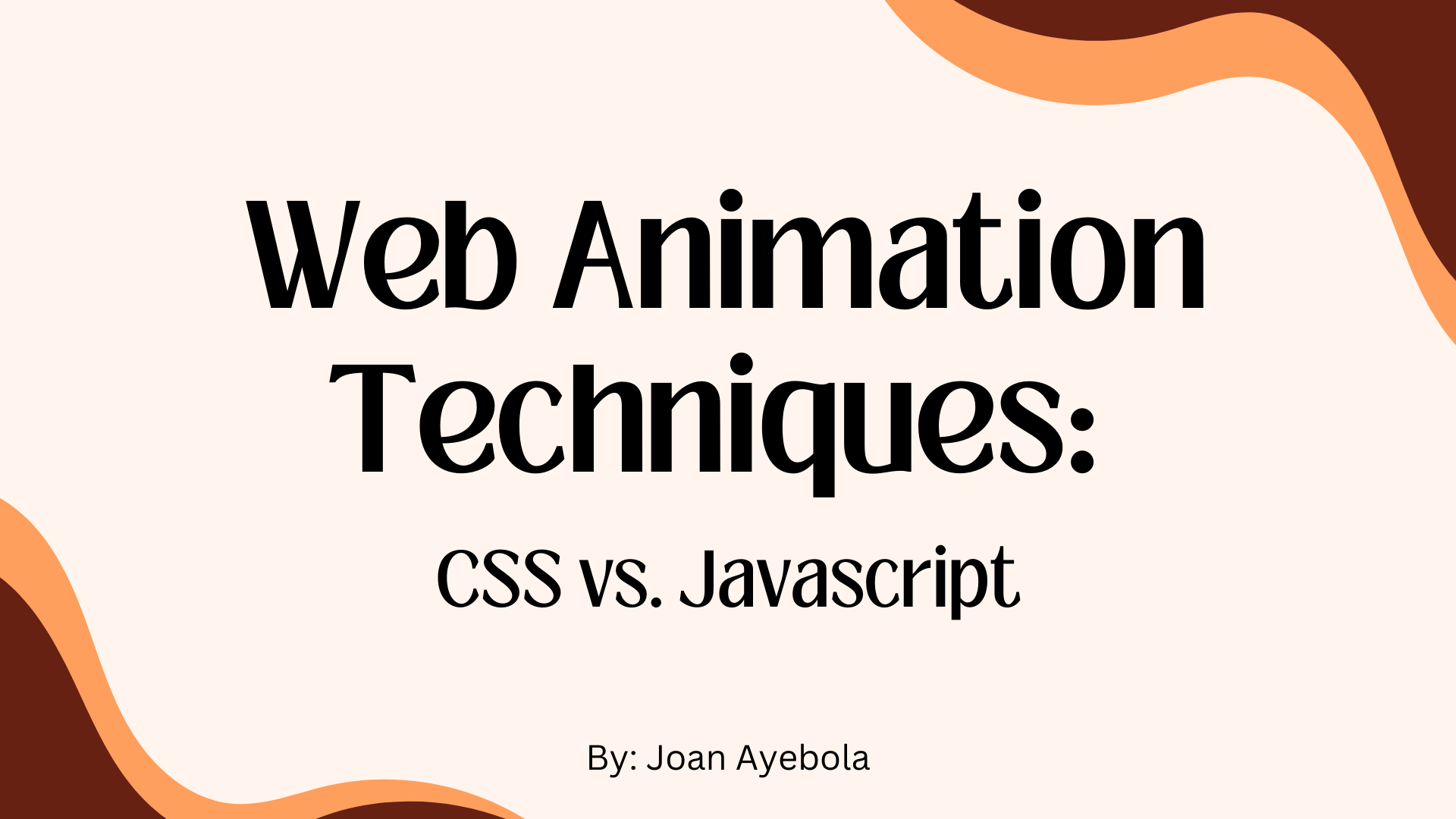In the fast-paced world of web development, keeping your websites engaging and visually appealing is crucial. One way to achieve this is by incorporating animations into your web design. With the power of CSS and JavaScript, you can breathe life into your web pages, creating interactive and dynamic user experiences. In this blog post, we’ll explore various web animation techniques using CSS and JavaScript, helping you level up your web development game.
Why Use Web Animations?
Before diving into the technical details, let’s discuss why web animations are essential for your web projects. Here are a few reasons to consider:
- Improved User Experience
Web animations can make your websites more interactive and engaging. They provide visual feedback to users, making the browsing experience more intuitive and enjoyable. - Storytelling
Animations can be used to tell a story or guide users through your website. Whether it’s a simple loading animation or a complex narrative, animations can convey information effectively. - Aesthetic Appeal
Animations add a touch of style and elegance to your web design. They can set the mood and tone of your website, making it more appealing to visitors. - Attention-Grabbing
Animated elements can draw users’ attention to specific content or calls to action, increasing the chances of conversions or interactions.
Now that we understand the importance of web animations let’s explore some techniques to implement them effectively.
CSS Animations
CSS animations are a powerful tool for creating simple and efficient animations directly in your stylesheets. They offer a wide range of possibilities, from basic transitions to complex keyframe animations.
- Transition Properties
CSS transitions are a straightforward way to add animation to elements when a property changes. You can specify the property to animate, the duration of the animation, and the timing function. For example, to create a smooth hover effect on a button:
css
Copy code
.button {
transition: background-color 0.3s ease;
}
.button:hover {
background-color: #ff5733;
}
In this example, when a user hovers over the button, the background color will smoothly transition to the specified color.
- Keyframe Animations
Keyframe animations in CSS allow you to create complex animations by defining keyframes at various points in time. You can specify the properties’ values at each keyframe, and the browser will interpolate between them. Here’s an example of a bouncing ball animation:
css
Copy code
@keyframes bounce {
0%, 100% {
transform: translateY(0);
}
50% {
transform: translateY(-30px);
}
}
.ball {
animation: bounce 2s infinite;
}
In this animation, the ball element will bounce up and down indefinitely, creating a dynamic effect.
JavaScript Animations
While CSS animations are great for many purposes, JavaScript animations provide even more control and flexibility. With JavaScript, you can create animations that respond to user interactions or dynamically update based on data changes.
- Using the requestAnimationFrame Method
The requestAnimationFrame method is a more efficient way to create animations in JavaScript compared to setTimeout or setInterval. It synchronizes animations with the browser’s repaint cycle, leading to smoother animations and better performance. Here’s a simple example of using requestAnimationFrame to animate an element’s position:
javascript
Copy code
const element = document.querySelector(‘.box’);
let position = 0;
function animate() {
position += 1;
element.style.transform = translateX(${position}px);
requestAnimationFrame(animate);
}
animate();
In this example, the animate function continuously updates the element’s position, creating a smooth horizontal movement.
- Libraries like GreenSock Animation Platform (GSAP)
If you need advanced animations or want to simplify complex animations, libraries like GSAP can be incredibly helpful. GSAP offers a wide range of features, including timeline control, easing functions, and even 3D animations. Here’s a quick example of animating an element’s scale using GSAP:
javascript
Copy code
const element = document.querySelector(‘.box’);
gsap.to(element, { duration: 2, scale: 1.5, repeat: -1, yoyo: true });
In this code, the element will continuously scale up and down, creating an eye-catching effect.
Conclusion
Web animation techniques using CSS and JavaScript open up a world of possibilities for enhancing your web projects. Whether you’re adding subtle transitions to improve user experience or creating complex animations to captivate your audience, animations are a valuable tool in your web development arsenal. Experiment with these techniques, and let your creativity shine in your web designs!



